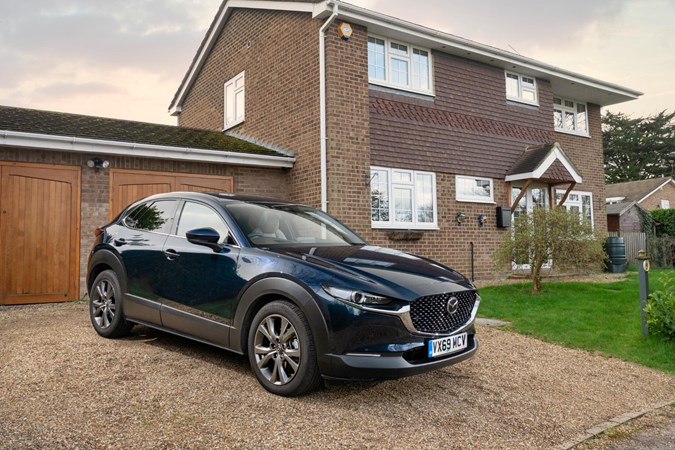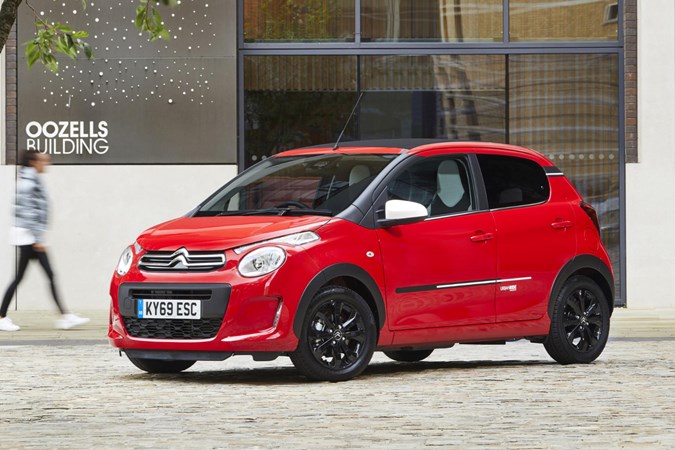
If your circumstances have changed and you need a new car, but can’t afford to settle the finance on it, negative equity finance can help. That’s because negative equity finance lets you buy a new car, repay the additional costs from a previous finance agreement and consolidate them into one monthly repayment.
To get your head around this, it’s important to understand what equity is. It generally refers to the difference between how much your car is worth and the outstanding amount on the car finance agreement.
For example, if your car’s value is £10,000, and you have £9,000 left to pay on it, there’s £1,000 worth of positive equity in it.
Using this very simple example, you can put the equity you have left in the car at the end of the finance agreement towards a deposit on your next car.
What is negative equity finance?
Negative equity happens when the value of an asset is less than the outstanding debt. With a car finance agreement, your car can be worth less than the remaining debt on it. This is common in the early stages of a contract, for example.
Negative equity finance agreements allow you to consolidate a new car and the additional costs from a previous agreement into one payment.
Providing you choose a cheaper new car, this can reduce your monthly outgoings.
How does negative equity affect PCP car finance?
Generally with PCP (Personal Contract Purchase) you put down a deposit, then follow them up with a set of fixed monthly payments.
At the end of the contract you can pay an optional final payment (sometimes called balloon payment) to buy the car outright. You could also choose to sell the car, freeing up any equity.
A lot of drivers choose to trade it in for a new model and another PCP contract. If you do this, you can cash-in on any equity the car may have adding it to the deposit on your next car, in order to reduce your monthly payments.

As most cars lose value fastest when they’re brand new, you start the contract with negative equity – where the outstanding debt outweighs the car’s value – and steadily pay this off.
As the contract progresses and the car’s depreciation slows, the fixed payments chip away at the debt until – in most cases – the car is worth more than the amount left to pay, leaving you with some extra cash in your pocket.
Most PCP schemes are calculated to leave you with some equity as you near the end of the contract. That means that you can often hand the car back early and still have a little cash to put down as a deposit on your next car – depending how soon you change car.
Negative equity car finance: what you need to know
PCP contracts don’t always leave you with equity, however. It is possible to end up with negative equity – even at the end of the contract. If you have £9,000 left to pay but the car is only worth £8,000, that would leave you with £1,000 of negative equity, so even if you gave the car back, you’d still owe £1,000.
This could occur earlier on in the contract, when you haven’t had a chance to pay off much of the balance. Or at the end, should the optional final payment to take ownership of the car be greater than its value. Where you are in the contract affects your options.
If the car’s worth less than the optional final payment at the end of the term, fear not. That’s the finance company’s loss. As long as the vehicle’s in good condition and below the pre-agreed mileage limit, you can return the car with nothing left to pay and simply walk away.
Even if you love the car and want to keep it, you could be better off purchasing an equivalent used model – for less than the optional final payment would set you back. Or you could even try negotiating with the finance company for a new settlement figure to reflect your model’s drop in value, if you’re set on keeping that specific car.
Negative equity and voluntary termination: how to return your car early
If you’re earlier in the contract but have paid more than half of the total balance due, you can return the car through a process known as Voluntary Termination (VT) with nothing else to pay – regardless of whether there is negative equity in the car.
Be aware, though, that this will be logged on your credit file, and if you do this two or more times lenders may be less willing to accept you for finance again – as each VT is likely to add to their costs.

If, however, you’re early on in the contract and haven’t paid half of the overall balance, you’ll have to pay the difference before handing the car back, or simply run the car until the halfway point.
Negative equity and GAP insurance
It’s worth remembering that you’re still liable for instalments, even if the car is stolen or written off. You may think that this isn’t a problem as your insurer will simply pay off the finance. However, that isn’t the case. Most insurers will simply pay out the current value for the car, which could leave you with thousands of pounds of negative equity.
Write off a 12-month old saloon and you could be liable for thousands more in outstanding finance payments than your insurer will pay out for an equivalent car.
GAP insurance (Guaranteed Asset Protection) covers the difference between how much your insurer would pay out for your car and how much is left to pay on the contract.
Do bear in mind, however, that most fully comprehensive insurance policies will provide a brand new car if yours was under a year old and stolen or written off. This can vary across insurers, so it’s worth double checking your policy documents rather than taking this for granted.

Further reading
>> Excess mileage charges and how they cost you dearly
>> What happens at the end of a PCP finance deal?
>> Best cars for £90 per month
>> Best cars for £100 per month
>> Best cars for £150 per month
>> Best cars for £200 per month
>> Best cars for £300 per month
>> Best cars for £400 per month
>> Best cars for £500 per month
>> Top PCH, PCP, and cash deals
Just so you know, we may receive a commission or other compensation from the links on this website - read why you should trust us.






